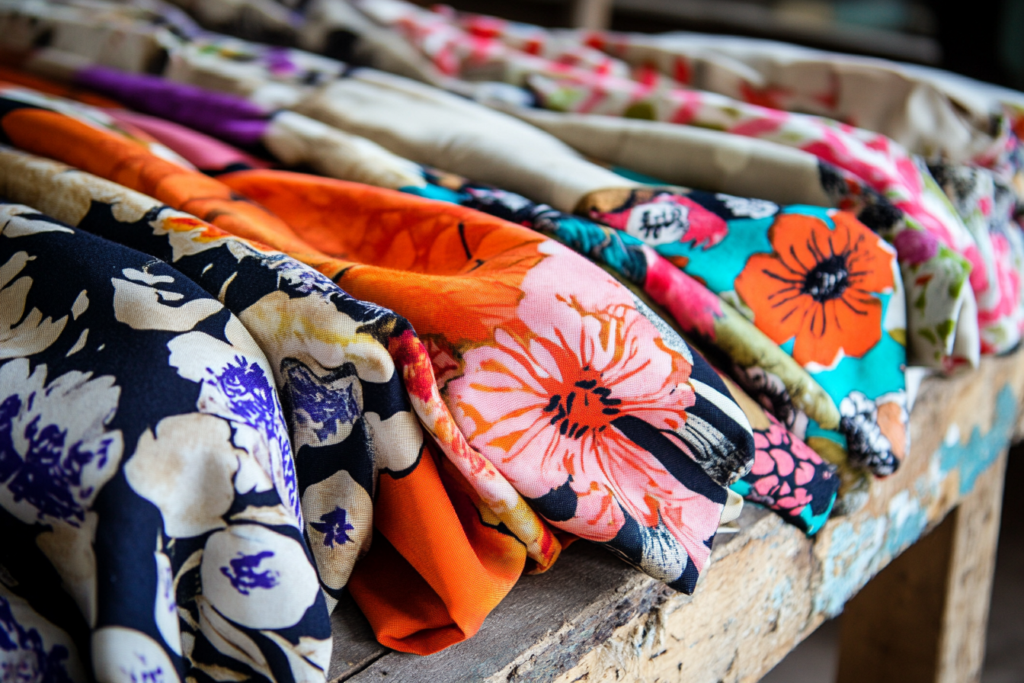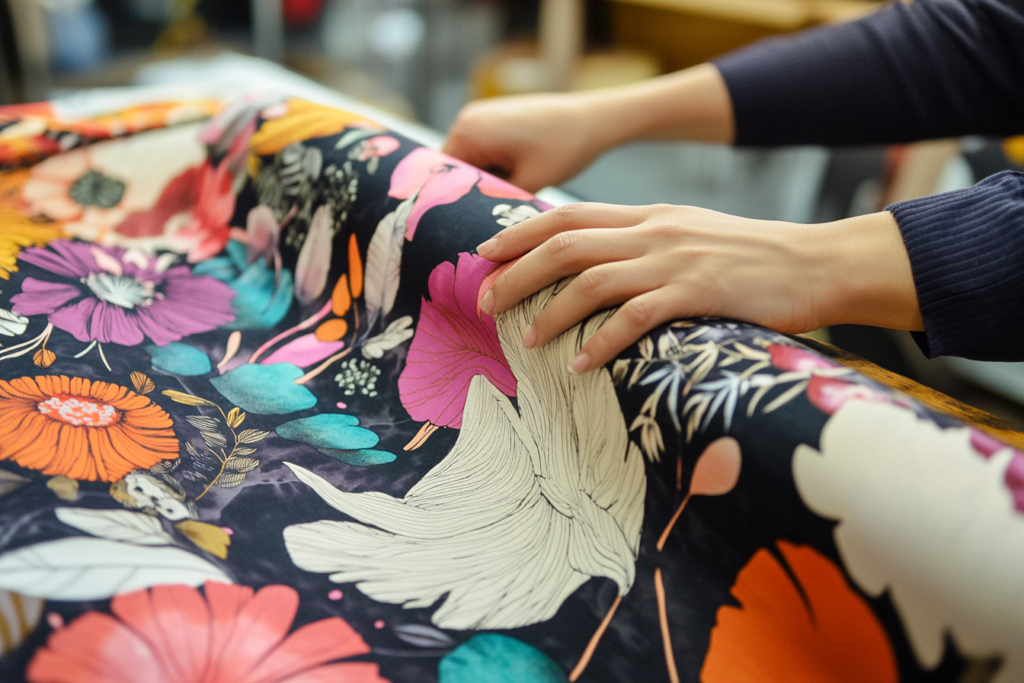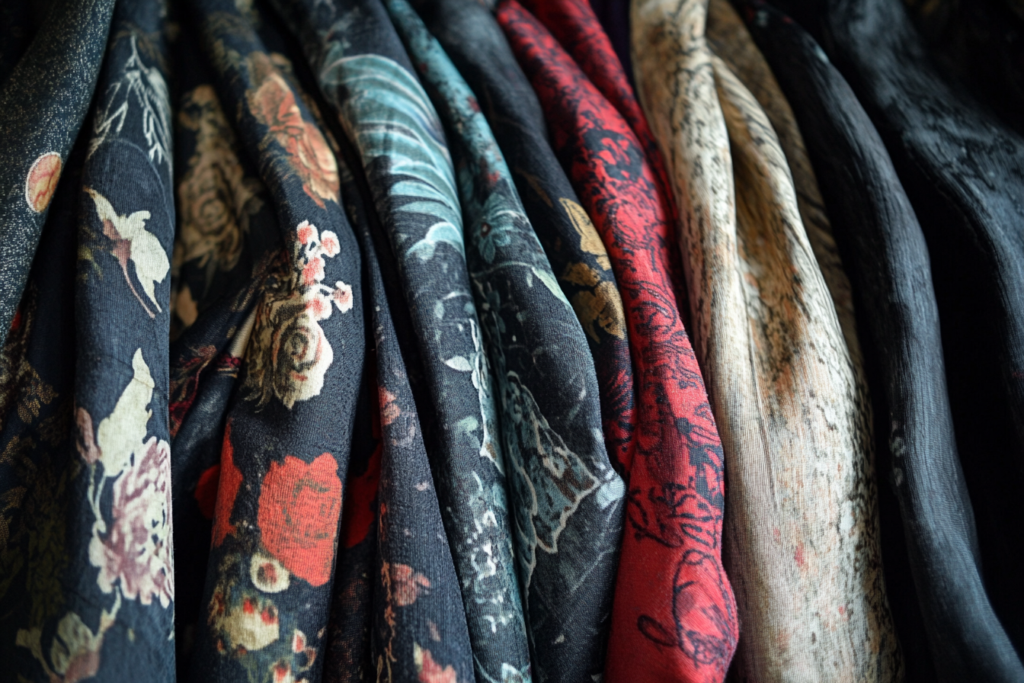Printing in Fashion: Designing Prints That Define Seasonal Collections
In the fashion industry, printing is a critical step in creating distinctive, visually appealing fabrics that align with seasonal trends. Whether it’s a bold tropical print for summer swimwear or a subtle plaid for outerwear, prints can transform a basic garment into something eye-catching. Fashion brands rely on both in-house designers and fabric printing companies to create unique prints that match the latest trends and meet customer expectations. From floral designs to geometric patterns, prints help define the aesthetic of each season, adding a visual dimension that complements the collection’s overall theme.


The Process of Designing Prints
Designing prints for fabrics is a creative and technical process that plays a significant role in fashion design. In large fashion companies, dedicated print designers handle the creation of fabric prints, while in smaller companies, the task often falls to the design team. This process involves:
- Trend Forecasting: Designers stay informed about current print trends through trend forecasting reports, fashion shows, and street style.
- Design Concepts: Print designs are conceptualized, often taking inspiration from nature, art, and culture.
- Fabric and Color Selection: After determining the print design, the fabric type and color palette are selected to ensure the print complements the overall collection.
- Printing Process: Once the design is finalized, the printing process begins, either in-house or with specialized fabric printing companies.
Types of Prints and Their Use in Fashion
Different clothing categories tend to feature specific types of prints that align with the season and the target market. For example, swimwear typically uses bold, vibrant prints, while outerwear may focus on more subtle patterns. Here’s a breakdown of popular prints for the current season:
| Print Type | Description | Ideal For | Icon |
|---|---|---|---|
| Floral Prints | Designs featuring flowers, often used in spring and summer collections to evoke femininity and nature. | Dresses, blouses, skirts | 🌸 |
| Tropical Prints | Bold prints featuring tropical plants, often vibrant and colorful. | Swimwear, summer dresses | 🌴 |
| Paisley Prints | A traditional, curved design that is often intricate and colorful. | Scarves, blouses, dresses | 🔴 |
| Polka Dots | Simple, round dots arranged in a uniform or varied pattern. | Casual wear, skirts, dresses | ⚪⚫ |
| Plaid | A pattern made up of horizontal and vertical stripes that form a criss-cross pattern. | Outerwear, pants, shirts | 🟩🟥 |
| Batik | Traditional dyeing technique using wax-resist to create unique, irregular patterns. | Summer wear, beachwear | 🌊 |
| Geometric Prints | Designs based on geometric shapes like squares, triangles, and circles. | Dresses, shirts, activewear | 🔵🔺 |
| Watercolor Effects | Soft, blended color patterns that resemble watercolors on fabric. | Scarves, blouses, dresses | 🎨 |
| Digital Prints | Modern prints that are created using digital technology, often involving complex and detailed designs. | Sportswear, swimwear, casual wear | 💻 |
Factors Affecting the Choice of Prints
When selecting prints for a collection, several factors come into play. Designers must balance creativity with practicality, ensuring that the chosen prints not only match the theme of the collection but also meet the needs of the target audience.
| Factor | Description | Icon |
|---|---|---|
| Seasonality | Certain prints are more suitable for specific seasons, such as floral prints for spring and bold patterns for summer. | 🌸☀️ |
| Fabric Type | The texture and weight of the fabric play a role in how prints appear. Delicate fabrics like silk often feature softer prints, while heavier fabrics like denim may use bold patterns. | 🧵 |
| Target Audience | Designers must consider the age, gender, and lifestyle of the target customer when selecting prints. | 👩🦰🧑🦳 |
| Trends & Consumer Preferences | Popular culture, social media, and past sales data guide designers in choosing prints that are most likely to appeal to consumers. | 📈 |
The Importance of Naming Prints
Naming prints adds another layer of branding and consumer appeal. Print names often align with the theme of the collection, and they are designed to evoke certain emotions or associations. For example, a tropical print might be named “Tropical Breeze,” or a paisley print could be called “Vintage Harmony.” The name plays a crucial role in how consumers perceive the product.
| Print Name | Inspiration | Seasonal Theme | Icon |
|---|---|---|---|
| Tropical Breeze | Inspired by tropical climates and exotic landscapes. | Summer, Beachwear | 🌴 |
| Paisley Legacy | A nod to the vintage paisley pattern, evoking elegance and tradition. | Fall, Elegant Casual | 🔵 |
| Watercolor Dream | Inspired by the soft, flowing nature of watercolor art. | Spring, Feminine Styles | 🎨 |
| Midnight Plaid | A modern take on the traditional plaid pattern, perfect for fall. | Fall, Outdoor Apparel | 🟩🟥 |
Challenges in Print Design
Designing prints for fabrics is not without its challenges. While it’s important to create prints that reflect the season’s theme and trends, designers must also consider factors such as:
- Fabric Compatibility: Certain prints work better on specific fabrics. For example, digital prints may not translate well onto certain fabrics, while watercolor effects often look better on soft fabrics like silk.
- Consumer Preferences: While designers have their vision, it’s essential to align print designs with what consumers want. An overly complicated print might not resonate with shoppers, especially in mass-market collections.
- Print Production: Depending on the printing method used (screen printing, digital printing, etc.), the production process can be complex and costly. Ensuring that designs can be effectively printed on fabric is key to a successful collection.
The Impact of Prints on Fashion Collections
Prints are more than just decorative patterns—they play a significant role in shaping a collection’s identity and attracting consumers. By staying informed about the latest print trends, understanding the production process, and creatively naming prints, designers can ensure their collections are both stylish and market-relevant. Whether creating bold tropical prints for swimwear or subtle plaid for outerwear, the right print can elevate a garment and make it a must-have for the season.
As the fashion industry continues to evolve, print design will remain an essential element in creating fresh, innovative collections that captivate and inspire consumers.




